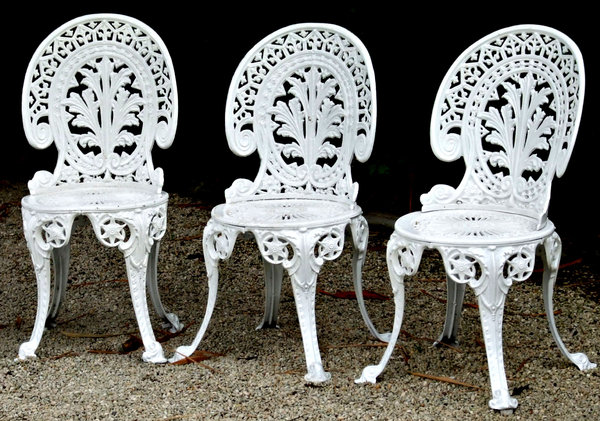Eliminate Garden Design As soon as and For All
페이지 정보

본문
 Traditional 2D garden designs can often be limited in their ability to convey the full scope and detail of a landscaping project. With 3D garden design, every aspect of the outdoor space can be accurately represented, from the texture of the paving stones to the height of the trees. This level of realism ensures that homeowners can make informed decisions about their garden design, leading to a more successful and satisfying outcome.
Traditional 2D garden designs can often be limited in their ability to convey the full scope and detail of a landscaping project. With 3D garden design, every aspect of the outdoor space can be accurately represented, from the texture of the paving stones to the height of the trees. This level of realism ensures that homeowners can make informed decisions about their garden design, leading to a more successful and satisfying outcome.Hamlet is the cat that has traveled the most, escaping from his carrier during a flight. For 7 weeks, he hid behind a panel. When he was found, he had already traveled for almost 373,000 miles or 600,000 km.
Gardens have always been a cherished part of homes, providing a tranquil space for relaxation and enjoyment. With the advancements in technology and design tools, 3D garden design has become increasingly popular and accessible to homeowners. This revolutionary approach to landscaping allows individuals to visualise their outdoor space in a realistic and detailed manner before making any physical changes. In this article, we will explore the benefits and techniques of 3D garden design, and how it can transform your home's outdoor space.
5. Repotting: As tropical houseplants grow, they may outgrow their pots and become root-bound. Check the root system periodically and repot your plants into a larger container with fresh potting mix as needed.
While tropical houseplants are generally easy to care for, there are a few key factors to consider in order to ensure their health and vitality. First and foremost, tropical plants require sufficient light in order to thrive. While they can tolerate lower light conditions, they will grow more slowly and may not produce as many flowers or vibrant foliage. Place your tropical plants in a bright, indirect light to provide them with the energy they need to flourish.
Tropical houseplants are a popular choice for indoor gardening enthusiasts, as they bring a touch of exotic beauty and vibrancy to any living space. With their lush foliage, vibrant blooms, and unique shapes, tropical plants can transform a mundane room into a lush oasis. In this article, we will explore the appeal of tropical houseplants, their benefits, and tips for caring for these stunning additions to your home.
In addition to plants, hardscaping features such as pathways, patios, and walls play an important role in garden design. These elements can provide structure and definition to the garden, as well as creating functional spaces for seating, dining, and entertainment. Hardscaping features can be made from a variety of materials, including stone, wood, concrete, and gravel, allowing you to create a unique and personalized garden design.
One of the main appeals of tropical houseplants is their ability to thrive indoors, even in spaces with limited natural light. Many tropical plants are well-suited to the lower light conditions found in most homes, making them an ideal choice for those with less than ideal growing conditions. In addition, tropical houseplants are generally low maintenance and easy to care for, making them a popular choice for beginners and experienced gardeners alike.
Ficus Benjamina (Weeping Fig.) A tree that probably should have never been turned into a houseplant. It tends to just drop leaves like Bill Clinton drops his pants; daily. The plastic version of this is probably your best bet.
Another important consideration in garden design is the overall style of the garden. There are many different garden styles to choose from, including formal, informal, contemporary, traditional, and cottage garden designs. Each style has its own unique characteristics and can be tailored to suit your personal taste and the architecture of your home.
In addition to their aesthetic appeal, tropical houseplants offer a range of benefits for both physical and mental wellbeing. Studies have shown that indoor plants can help to purify the air, removing toxins and pollutants and improving air quality. Tropical houseplants, with their large leaves and rapid growth, are particularly effective at filtering out harmful substances such as formaldehyde, benzene, and xylene.
1. Monstera deliciosa: Also known as the Swiss cheese plant, this tropical vine has large, glossy leaves with unique oval-shaped holes. Monstera deliciosa is easy to care for and can thrive in a variety of light conditions, making it a popular choice for beginners.
 2. Bird of Paradise (Strelitzia reginae): With its striking orange and blue flowers that resemble a bird in flight, the Bird of Paradise is a tropical plant that makes a bold statement in any room. It requires bright, indirect light and regular watering to thrive indoors.
2. Bird of Paradise (Strelitzia reginae): With its striking orange and blue flowers that resemble a bird in flight, the Bird of Paradise is a tropical plant that makes a bold statement in any room. It requires bright, indirect light and regular watering to thrive indoors.One of the most well-known benefits of houseplants is their ability to improve indoor www.stes.tyc.edu.tw air quality. Plants are natural air purifiers, absorbing carbon dioxide and releasing oxygen through the process of photosynthesis. They also help to remove harmful toxins such as formaldehyde, benzene, and trichloroethylene from the air, resulting in cleaner, fresher indoor air.
- 이전글It's The Complete Cheat Sheet For Auto Accident 24.06.02
- 다음글10 Apps To Aid You Control Your Double Bed Bunk Beds 24.06.02
댓글목록
등록된 댓글이 없습니다.
